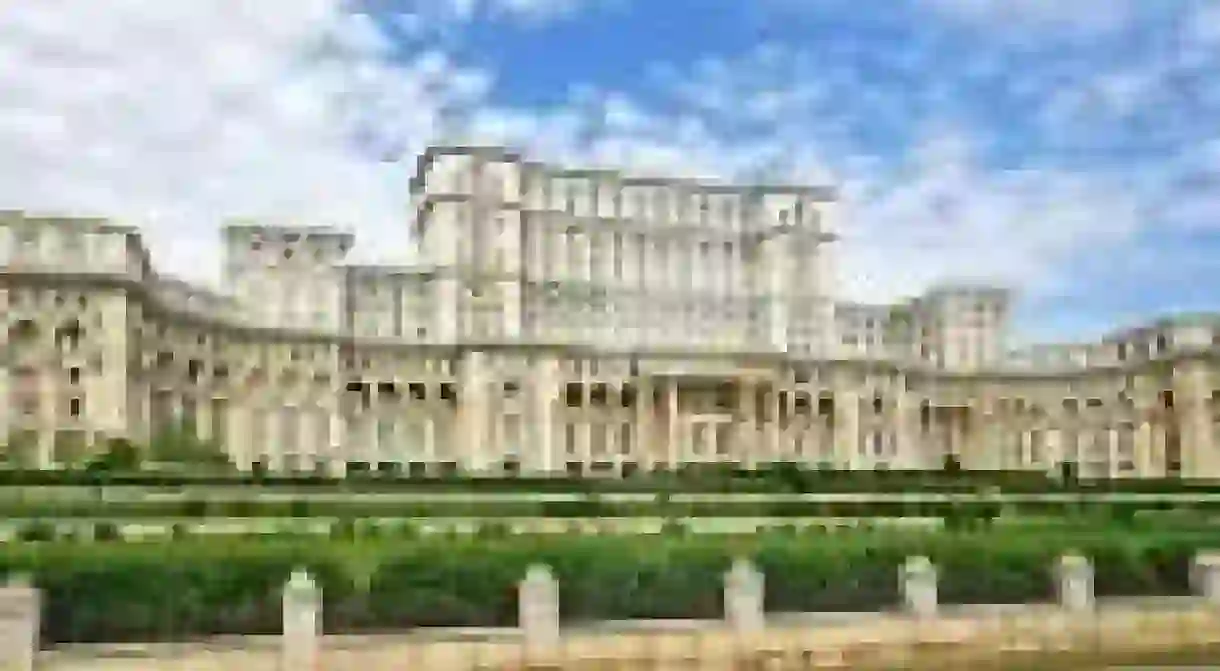The Palace Of Parliament: Communist Mansion Turns Capitalist Paradigm

The Palace of the Parliament in Romania, or the ‘People’s Palace’ as it was referred to during Ceauceșcu’s rule, is a nod back to the not so distant past of Romania’s history and highlights how rapidly the country has changed in recent years. Melissa Pearce explores the past and present of this iconic site, and questions its future as either a disused historic landmark or vast tourist attraction.

Following one of the most violent revolutions Europe has ever witnessed, Nicolae Ceauceșcu was forced to flee the country by helicopter and was eventually sentenced to death on Christmas Day 1989. He left in his wake a decline in the economy of Romania and a difficult livelihood for its people, in addition to an incomplete palace. Once a symbol of his utilitarian rule, the building is today a testament to Romanian history, and their recovery from Ceauceșcu’s rule. The Palace of the Parliament is known by most as ‘Ceauceșcu’s Palace’: an attestation to the outrageous luxury within which the politician would have lived, had he not been overthrown in a coup d’état. Located in Bucharest, the construction of the palace began with the intention of being the home of the Communist government in Romania, and the residence of the Ceauceșcu family, upon its completion. But since the fall of Communism in Romania over 20 years ago, the palace has acted mainly as a tourist attraction, with only a percentage of the rooms being used for parliamentary headquarters.

Nicolae Ceauceșcu was the face of the Communist Party in Romania, and was the country’s final Socialist leader. His ‘cult of personality’ regime lined the streets with posters of his face and left many irreversible marks on the country’s landscape. The extremities to which he went in order to solidify his rule and keep the public in check included quelling freedom of speech and the media, and reinforcing strict laws which were imposed with the help of his secret police, the Securitate. The palace is undoubtedly a huge imprint on the landscape of Bucharest, and a symbol of Romania’s history.
The luxurious palace of marble, steel and the finest Romanian materials is the world’s second largest building; it has a staggering 1,100 rooms, 12 stories and can be seen from space. Its construction took 13 years to finish, and there are parts of the palace that still remain under construction today. When its construction began in the early 1990s, Romania was going through extreme poverty. In an area where power cuts were a daily occurrence and rationing of basic goods was commonplace, Ceauceșcu destroyed or relocated hundreds of buildings both residential and religious to make room for his Communist stronghold. This forced thousands of people to suddenly uproot their families and move into often smaller residential areas.

Today, members of the Romanian parliament and Constitutional Court take up a very small percentage of the palace. With this in mind, there have been plans in the works to enhance the palace’s position as a sightseeing destination, and these plans will intendedly emphasize Romania’s relatively new position as a democratic nation. The palace already displays the potential for growth, currently housing the National Museum of Contemporary Art of Romania in addition to the Park of Totalitarianism and Socialist Realism, both of which opened in 2004. The vast space within which these exist provides incredible potential for huge exhibitions and events, and will inevitably attract attention from other European and overseas developers and organizers who seek to bring further cultural activities to Romania.
The plans specifically are rumored to involve the use of the palace as a shopping centre and entertainment complex. While it could be seen that creating one of the biggest shopping malls in Europe is a little crude, the change will yield some much needed money for the country’s economy, and put the currently desuetude space to good use. There are however some who oppose the idea and believe that the building should be left empty, as a mark of respect, for many who still see it as a historical landmark.

Whatever your opinion, the transformation of a palace that was intended to be used as the seat for a Communist government (and exist as a house for a Communist leader), into a shopping mall so large that it can be seen from space, is not without a pinch of irony. Only time will tell what will become of the gargantuan building, but for now at least it continues to be a hotspot for tourists, celebrity appearances and events, and it stands as an international spectacle of what has been overcome.













